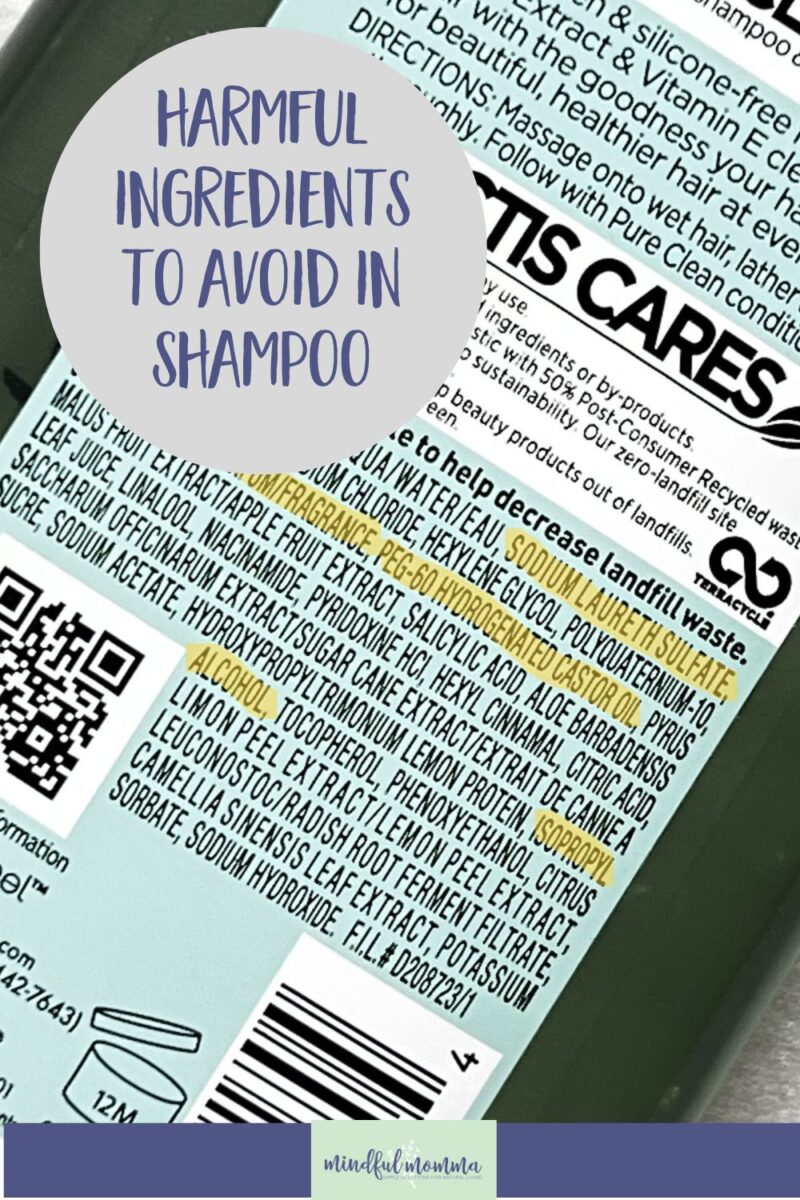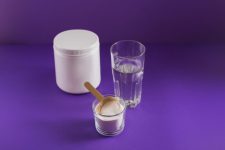Top 10 Harmful Ingredients Lurking in Your Shampoo
6 min read
Discover the truth about bad ingredients in shampoo and their detrimental impact on your hair, your health, and the environment. In this post you’ll learn how to spot and avoid these harmful chemicals, empowering yourself to make informed choices for a healthier haircare routine.
Whether you wash your hair daily, or just once a week, shampoo is one of those personal care products that is in regular rotation.
As you lather up, it’s important to be aware of the potential risks posed by bad chemicals commonly found in commercial shampoos. These harmful ingredients can not only impact the appearance of your hair, but also have broader implications for your overall well-being, as well as a negative impact on the environment.
This blog post will help you uncover the truth about these toxic additives, decode confusing product labels, and empower you to make informed choices for safe and effective haircare.
Let’s get into it!
This post contains affiliate links. I may receive commissions from purchases made through links in this article, including Amazon Affiliates. Full Disclosure



The Risks of Harmful Chemicals in Shampoo
You’d think shampoo available for sale in stores would be 100% safe, wouldn’t you? But sadly, consumer products aren’t as well regulated for safety in the United States as most people think.
Chemicals that have the potential to cause harm are legally allowed in shampoo products, yet most people are not aware of this. The result could be damage to your hair or worse, to your health in general.
Personally, I think it’s smart to operate by the precautionary principle and steer clear of chemicals that are potentially harmful.
Damage to Your Hair & Scalp
Commercial shampoos are often harsher than you would expect, which can lead to damage to your hair and scalp. Some chemicals can weaken your hair, making it prone to split ends and breakage. Other chemicals can strip away natural oils, causing dryness and itchy or flaky scalp.
Other Negative Health Outcomes
Many shampoos contain chemicals that have been linked to allergic reactions, as well as more serious health effects. Synthetic fragrances in shampoos can cause allergic reactions, such as hives, rashes, and itching in people with sensitive skin. Some chemicals in shampoos, such as phthalates, can cause hormonal disruptions, while others are known to be carcinogenic.
Impact on the Environment
Chemicals in shampoo can be harmful to the environment when they are rinsed down the drain and enter water bodies. Ultimately those chemicals can pollute rivers rivers and streams, damage ecosystems and cause harm to marine animals and wildlife.
Looking for the safest shampoos? I’ve got you covered!
Top 10 Bad Ingredients in Shampoo
So now that you understands the risks, let’s take a look at the worst ingredients that might be lurking in your shampoo. To make it easier for you, I’ve identified which of these ingredients are potentially bad for your hair 👱🏼♀️, your health ☠️and the planet 🌍.
1. ) Sulfates – Sulfates, such as sodium lauryl sulfate (SLS) and sodium laureth sulfate (SLES), are strong detergents that create the foaming action in shampoos. SLS is particularly harsh and can irritate eyes and lead to dry hair and scalp. Sodium laureth sulfate is especially concerning because it is an ethoxylated ingredient that can be contaminated with 1,4 dioxane, which is a probable carcinogen. Sulfates can also acidify surface water and soil, which is bad for aquatic organisms and the environment.
- Seen on ingredient list: sodium lauryl sulfate, sodium laureth sulfate
- Bad for: 👱🏼♀️☠️🌍
2.) Parabens – Parabens are preservatives very commonly used in conventional shampoos and other water-based products, because they discourage the growth of microbes. Unfortunately, paraben preservatives are known hormone disruptors that have been associated with breast cancer as well as reproductive harm. Fortunately, safer preservatives are available for use in personal care formulas. Due to their widespread use, parabens have also been showing up in marine animals.
- Seen on ingredient list: methylparaben, propylparaben, butylparaben, ethylparaben
- Bad for: ☠️🌍
3.) Formaldehyde-Releasing Preservatives – Preservatives that release formaldehyde are used in some shampoos to prevent the growth of bacteria and mold. Formaldehyde is a known carcinogen and is also linked to allergic skin reactions and chemical burns. DMDM hydantoin in particular has been linked to hair loss and scalp burns in a class action law suit.
- Seen on ingredient list: DMDM hydantoin, quaternium-15, diazolidinyl urea
- Bad for: 👱🏼♀️☠️
4.) Ethanolamine Compounds – Ethanolamines are used for emulsification and to adjust PH in shampoos and other personal care products. These chemicals can react with other chemicals in a formula to form carcinogenic nitrosamines.
- Seen on ingredient list: diethanolamine (DEA), triethanolamine (TEA), monoethanolamine (MEA)
- Bad for: ☠️
5.) Ethoxylated Ingredients: Many ingredients that create suds go through a process called ethoxylation. The negative side effect of this process is that the ingredients can be contaminated with 1,4-dioxane, which has been classified by the EPA as a probable carcinogen.
- Seen on ingredient list: sodium laureth sulfate and other ingredients with “eth” at the end, ingredients with PEG such as PEG-40 or PEG-10
- Bad for: ☠️
6.) Artificial Fragrances – When you see the term fragrance on a shampoo label, it is a catchall for thousands of possible chemicals that fragrance companies can choose from. These chemicals may cause skin irritation (which may lead to itchy scalp or dandruff), allergic reactions or may disrupt hormone activity.
- Seen on ingredient list: fragrance, parfum
- Bad for: 👱🏼♀️☠️
7.) Dimethicone – Dimethicone is a form of siloxane or silicone that is used to add “slip” or that silky, smooth feeling to hair care products. It is generally considered safe for human health but can cause buildup on the hair and scalp, leading to dryness and irritation. Some studies show that dimethicone is likely to persist in the environment and could be toxic to aquatic life.
- Seen on ingredient list: dimethicone
- Bad for: 👱🏼♀️🌍
8.) Benzene – Benzene is a contaminant that comes from butane—a common propellant used in aerosols, including dry shampoo sprays. According to the CDC, exposure to benzene can lead to short term health effects, and long-term exposure can lead to reproductive problems as well as leukemia, a type of blood cancer.
- Seen on ingredient list: isobutane
- Bad for: ☠️
9.) Petroleum Products – Ingredients that are made from petroleum are not environmentally friendly because crude oil is a non-renewable resource.
- Seen on ingredient list: propylene glycol, words containing propyl, words containing ethyl or methyl, words ending with “eth”
- Bad for: 🌍
10.) Alcohols: Certain types of alcohols, such as aminomethyl propanol, ethanol, and isopropyl alcohol are sometimes used in shampoos in order to remove oils. But this can have a drying effect on hair, making it brittle and causing split ends.
- Seen on ingredient list: alcohol, isopropyl alcohol, ethanol, benzyl alcohol, aminomethyl propanol
- Bad for: 👱🏼♀️
RELATED POST: Top Ingredients to AVOID in Personal Care Products
Take advantage of all my hard work and research by picking up a copy of my Eco-Friendly Brands Guide!
Identifying Toxic Ingredients on Shampoo Labels
Now that you know which ingredients are bad, how do you find them on ingredient labels so that you can actually AVOID them?
The good news is that manufacturers of personal care products like shampoo are required to include a full ingredients list on the product package – so be sure to turn the bottle around and take a look at the back!
And don’t be fooled by greenwashing on the front of the bottle. Just because it says “clean”, “natural” or “paraben free” does NOT mean that the formula is actually safe and healthy. This particular shampoo rates a 5 on Skin Deep, which is a medium rating, but you could do much better!
(Here’s a list of the best non-toxic shampoos I’ve tried if you are interested.)
More Ways to Identify Safe Shampoo Brands
If you really don’t want to worry about specific ingredients in your shampoo, there are a couple of easy ways to identify safer products.
Third-Party Certifications
An easy way to tell if a shampoo is safe and non-toxic is to look for a trusted certification on the label or box. These third-party certifications ensure that the product has met strict safety standards. Here are a few certifications you might find on shampoo:
I’ve got more detailed information about these personal-care certifications if you are interested.
EWG’s Skin Deep Database
The Environmental Working Group’s Skin Deep Database is a great resource for researching products to determine their level of safety based on calculated hazard ratings. A rating of 1-2 is the best rating, given to the safest products. Ratings between 3 – 6 are the middle ground, and ratings of 7 – 10 indicate the highest hazard (and products you probably want to avoid).
Homework: Go check the label of your favorite shampoo. Do you see any of the bad ingredients we talked about listed?











